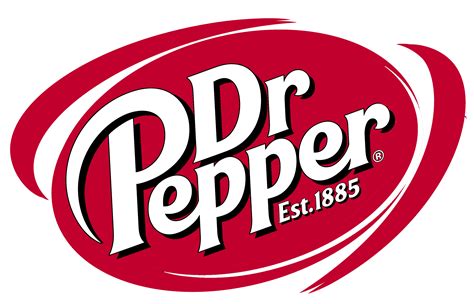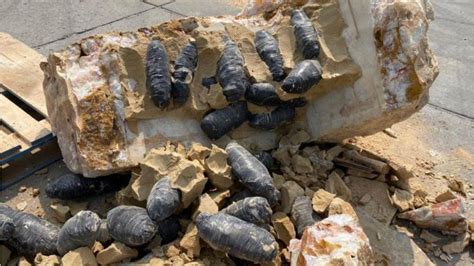
Dr Pepper Snapple Group has expanded a voluntary recall of certain Dr Pepper, 7-Up, and other beverages due to the potential presence of glass fragments inside the cans, sparking concerns about consumer safety. The recall, initially announced weeks prior, now includes a wider range of products and production dates across multiple states, prompting the Food and Drug Administration (FDA) to classify the event as a Class II recall, indicating a potential health hazard.
The Dr Pepper Snapple Group (Keurig Dr Pepper) initiated the expanded voluntary recall after internal quality control checks revealed the possibility of glass shards in specific batches of their canned drinks. The FDA’s classification underscores the seriousness of the situation, emphasizing that exposure to these products could lead to temporary or medically reversible adverse health consequences, or even a situation where the probability of serious adverse health consequences is remote.
The recall impacts a variety of beverages manufactured by Keurig Dr Pepper and bottled by a third-party manufacturer. Affected products include Dr Pepper, 7-Up, Canada Dry Ginger Ale, RC Cola, and other similar carbonated drinks. These beverages were distributed across several states, including Texas, Louisiana, Arkansas, and potentially others, heightening the urgency of consumer awareness. The specific production dates and batch codes subject to the recall have been identified and are being disseminated to retailers and distributors to ensure swift removal of the affected products from store shelves.
According to the FDA, the recall was officially initiated on April 19, 2024, with updates continuing to refine the scope and impact of the affected products. Consumers are urged to check the product codes on their canned beverages against the list of recalled items to avoid potential injury.
The presence of foreign objects, such as glass shards, in food and beverage products poses a significant health risk. Ingesting glass can cause lacerations or perforations in the mouth, throat, esophagus, and digestive tract, leading to bleeding, infection, and severe discomfort. Symptoms may include pain while swallowing, abdominal pain, vomiting, and the presence of blood in the stool. In severe cases, surgical intervention may be required to remove the glass fragments and repair any damage to the digestive system.
Keurig Dr Pepper has not yet released extensive details regarding the cause of the contamination. Preliminary investigations suggest the issue stems from a third-party manufacturer responsible for canning a portion of their beverage production. This highlights the complexities of supply chain management and the importance of rigorous quality control measures at every stage of production. Companies often rely on external suppliers and co-packers, making it critical to enforce stringent quality standards and conduct regular audits to ensure compliance with safety regulations.
Consumers who have purchased recalled products are advised not to consume them. Instead, they should return the beverages to the point of purchase for a full refund. Keurig Dr Pepper has established a dedicated consumer hotline and website to provide detailed information about the recall, including a list of affected products, batch codes, and instructions for obtaining refunds or replacements.
This incident serves as a stark reminder of the potential risks associated with food and beverage manufacturing and the critical importance of maintaining robust quality control procedures. Recalls due to contamination or the presence of foreign objects are not uncommon in the food and beverage industry, and they can have significant financial and reputational consequences for the companies involved. Beyond the immediate cost of the recall, companies may face lawsuits, regulatory penalties, and long-term damage to their brand image.
To prevent future incidents, manufacturers must invest in advanced quality control technologies, such as X-ray inspection systems, metal detectors, and vision inspection systems. These technologies can detect even small contaminants in real-time, allowing manufacturers to remove affected products from the production line before they reach consumers. Regular audits of suppliers and co-packers are also essential to ensure that they adhere to the same high standards of quality and safety.
Furthermore, companies should have well-defined recall procedures in place to respond quickly and effectively to any potential contamination incidents. This includes establishing a dedicated recall team, developing a communication plan to inform consumers and retailers, and working closely with regulatory agencies to ensure compliance with all applicable laws and regulations. Transparency and proactive communication are crucial to maintaining consumer trust and minimizing the negative impact of a recall.
The potential repercussions of this Dr Pepper recall extend beyond immediate health concerns. Consumer confidence in the brand and the broader beverage industry could be shaken. Companies must address these concerns with open communication and concrete actions to reassure consumers that their safety is the top priority.
In-Depth Analysis and Background Information
The current recall underscores the vulnerability of large-scale food and beverage production to contamination issues, even with established quality control measures. Several factors can contribute to the introduction of foreign objects like glass shards into the production line:
-
Equipment Malfunctions: Manufacturing equipment, particularly filling and sealing machinery, can be susceptible to wear and tear. Glass components within these machines, such as sight glasses or sensors, can break down over time, potentially introducing glass fragments into the product stream.
-
Supplier Issues: If glass containers or components are sourced from external suppliers, any defects or damage during manufacturing or transportation can lead to the presence of glass shards in the received materials. Thorough inspection of incoming materials is crucial, but even with careful checks, some defects may go undetected.
-
Human Error: Although automated systems play a significant role in modern manufacturing, human intervention is still required for tasks such as equipment maintenance, cleaning, and quality checks. Errors during these processes can inadvertently introduce contaminants into the production line.
-
Inadequate Cleaning Procedures: Insufficient or improper cleaning of equipment and production areas can leave behind residual glass fragments from previous incidents or equipment maintenance.
-
Packaging Defects: Glass shards can originate from the packaging itself, particularly if glass bottles or jars are used. Damage during handling or transportation can create small glass fragments that contaminate the product.
The Keurig Dr Pepper recall highlights the complexity of managing a vast supply chain and the challenges of ensuring consistent quality across multiple production facilities. When companies rely on third-party manufacturers or co-packers, they become dependent on the quality control practices of these external entities. This necessitates rigorous oversight and auditing to verify compliance with established safety standards.
The FDA’s Class II recall classification indicates that the presence of glass shards in the affected beverages poses a potential health hazard, but the probability of serious adverse health consequences is considered remote. This classification is based on the available information about the size and quantity of glass fragments that may be present in the product, as well as the potential for consumer exposure.
However, even small glass shards can cause significant discomfort and injury if ingested. The sharp edges of the glass can lacerate the mouth, throat, esophagus, and digestive tract, leading to pain, bleeding, and infection. Individuals with pre-existing digestive conditions, such as ulcers or Crohn’s disease, may be particularly vulnerable to complications.
The financial impact of a product recall can be substantial. In addition to the direct costs of removing affected products from the market, companies may face costs associated with consumer refunds, legal fees, and damage to their brand reputation. The loss of consumer trust can be particularly damaging, as it can take years to rebuild confidence in a brand that has been associated with a safety issue.
To mitigate the risks of future recalls, companies should invest in comprehensive quality control programs that encompass all aspects of the production process, from raw material sourcing to finished product distribution. These programs should include the following elements:
-
Hazard Analysis and Critical Control Points (HACCP): HACCP is a systematic approach to identifying and controlling potential hazards in food production. It involves analyzing the production process to identify critical control points where hazards can be prevented, eliminated, or reduced to acceptable levels.
-
Good Manufacturing Practices (GMPs): GMPs are a set of guidelines that outline the minimum standards for manufacturing food and beverage products. They cover aspects such as facility design, equipment maintenance, sanitation, and employee hygiene.
-
Supplier Audits: Regular audits of suppliers and co-packers are essential to ensure that they adhere to the same high standards of quality and safety as the company itself. These audits should assess the supplier’s quality control procedures, food safety practices, and compliance with regulatory requirements.
-
Traceability Systems: Robust traceability systems allow companies to track products from the point of origin to the consumer. This enables them to quickly identify and isolate affected products in the event of a recall.
-
Consumer Complaint Monitoring: Monitoring consumer complaints can provide valuable insights into potential product defects or safety issues. Companies should have a system in place for collecting, analyzing, and responding to consumer complaints in a timely and effective manner.
-
Employee Training: Properly trained employees are essential for maintaining quality control and preventing contamination. Training programs should cover topics such as food safety, hygiene, equipment operation, and hazard recognition.
The Dr Pepper recall serves as a wake-up call for the food and beverage industry, highlighting the importance of vigilance and continuous improvement in quality control practices. Companies must prioritize consumer safety above all else and invest in the resources and technologies necessary to minimize the risk of contamination and recalls.
Expanded Context
The Keurig Dr Pepper incident is not an isolated occurrence. The food and beverage industry has witnessed numerous recalls in recent years due to various contamination issues, ranging from bacterial outbreaks to the presence of foreign objects. These incidents underscore the challenges of maintaining consistent quality and safety in a complex global supply chain.
One of the most significant food safety challenges is the globalization of the food supply. Companies now source ingredients and packaging materials from all over the world, making it more difficult to monitor and control the quality of these inputs. Differences in regulatory standards and enforcement practices across countries can also create opportunities for unsafe or substandard products to enter the market.
Another challenge is the increasing complexity of food processing technologies. Modern food production often involves intricate processes and sophisticated equipment, which can increase the risk of contamination or equipment malfunctions. Companies must invest in training and maintenance to ensure that these technologies are used safely and effectively.
Climate change is also emerging as a significant food safety threat. Rising temperatures and changing weather patterns can increase the risk of bacterial growth and contamination in food products. Companies must adapt their food safety practices to account for these changing environmental conditions.
The regulatory landscape for food safety is constantly evolving. Governments around the world are enacting stricter regulations and increasing enforcement efforts to protect consumers from foodborne illnesses and other health risks. Companies must stay abreast of these changes and ensure that they are in compliance with all applicable laws and regulations.
In the United States, the Food Safety Modernization Act (FSMA) is the most comprehensive reform of food safety laws in more than 70 years. FSMA shifts the focus from responding to foodborne illnesses to preventing them in the first place. It gives the FDA new authority to regulate the way food is grown, processed, and transported.
FSMA includes several key provisions, including:
-
Preventive Controls for Human Food: This rule requires food facilities to develop and implement written food safety plans that identify potential hazards and establish preventive controls to minimize the risk of contamination.
-
Preventive Controls for Animal Food: This rule requires animal food facilities to develop and implement written food safety plans similar to those required for human food facilities.
-
Produce Safety Rule: This rule establishes science-based standards for the safe production and harvesting of fruits and vegetables.
-
Foreign Supplier Verification Program (FSVP): This rule requires importers to verify that their foreign suppliers are producing food in a manner that is consistent with U.S. food safety standards.
-
Sanitary Transportation Rule: This rule requires companies that transport food to take steps to prevent contamination during transportation.
FSMA represents a significant step forward in improving food safety in the United States. However, its success depends on effective implementation and enforcement by the FDA, as well as the willingness of companies to invest in the resources and technologies necessary to comply with the new regulations.
Frequently Asked Questions (FAQ)
-
What products are included in the Dr Pepper recall? The recall includes select cans of Dr Pepper, 7-Up, Canada Dry Ginger Ale, RC Cola, and other similar carbonated beverages produced by Keurig Dr Pepper and bottled by a third-party manufacturer. Specific batch codes and production dates are subject to the recall.
-
What is the reason for the recall? The recall was initiated due to the potential presence of glass fragments in the cans. These fragments pose a health risk to consumers if ingested.
-
What should I do if I have purchased a recalled product? Consumers who have purchased recalled products are advised not to consume them. They should return the beverages to the point of purchase for a full refund.
-
Which states are affected by the recall? The affected beverages were distributed across several states, including Texas, Louisiana, Arkansas, and potentially others. Consumers in these states should check their products carefully.
-
How can I find out if the Dr Pepper, 7-Up, or other beverage products I purchased are affected? Keurig Dr Pepper has established a dedicated consumer hotline and website to provide detailed information about the recall, including a list of affected products, batch codes. Consumers can also contact the retailer where they purchased the product for further assistance.
-
What kind of health risks does this recall pose to consumers? The consumption of beverages contaminated with glass shards can lead to injuries in the mouth, throat, esophagus, and digestive tract, potentially causing lacerations, bleeding, infections, pain while swallowing, abdominal pain, vomiting, and bloody stool. In severe instances, surgery may be necessary.
-
Who is liable for damages that occur in consumers due to the contaminated beverages? In cases of contaminated products causing harm, multiple parties along the supply chain, including the manufacturer (Keurig Dr Pepper), the third-party bottling company, distributors, and retailers, could be held liable for damages. The exact determination of liability depends on factors such as negligence and breaches of warranty.
-
What legal options are available to consumers injured by recalled Dr Pepper products? Injured consumers may pursue product liability claims against liable parties to recover damages, which may include medical expenses, lost wages, pain and suffering, and other losses resulting from the injury. Consumers can also report their injuries to the FDA.
-
What steps have been taken to prevent future recalls of this nature? To prevent future incidents, manufacturers must invest in advanced quality control technologies, regular audits of suppliers and co-packers, and well-defined recall procedures with a dedicated recall team and communication plans. It is also essential to foster transparency and proactive communication.
-
How is the FDA involved in this recall, and what are its responsibilities? The FDA’s responsibilities in this recall include classifying the recall based on the severity of the health risk, overseeing the recall process, providing guidance to the manufacturer, monitoring the effectiveness of the recall, and informing the public about the recall and associated risks. The FDA ensures that the recall is conducted effectively and that appropriate measures are taken to protect consumers.









